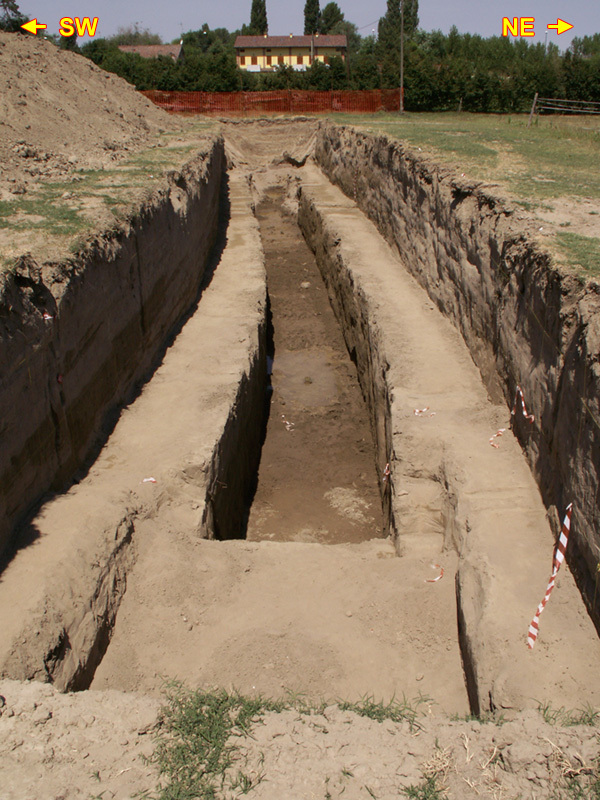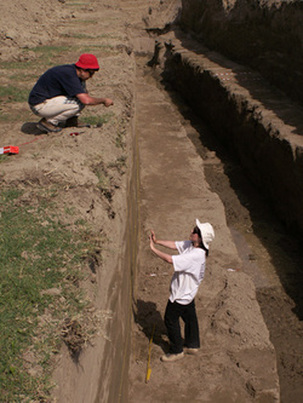 Research team: Riccardo Caputo (coordinator), Marco Stefani, Adriano Zanferrari, Eliana Poli, Luca Minarelli, George Papathanassiou, Kyriaki Iordanidou and Sotiris Sboras . On May 2012, two moderate-to-strong earthquakes stroke the SEern region of Emilia Romagna among the towns of Bologna, Modena, Ferrara and Mantova. The first shock which occurred on May 20 was the strongest one and was accompanied by extensive liquefaction phenomena. The causative fault is a blind, reverse, S-dipping structure. The second strongest event occurred on May 29, but it is not clear if it produced newer liquefaction phenomena. Extensive liquefaction phenomena and ground ruptures were documented in the area around Sant’Agostino, San Carlo and Mirabello, which represents an old river channel with its corresponding levee (see previously published post 1 and post 2). Near to the cemetery of Sant’Agostino – San Carlo, a NE-SW-trending ground rupture was observed, a location that was suitable for palaeoseismic and palaeoliquefaction investigations. A 55 m-long and 5-6 m-deep palaeoseismological trench is excavated in a NW-SE direction. The trench cuts through the embankment deposits of a palaeochannel which are disturbed by secondary fractures filled in with liquefied sandy material. The fractures show a normal movement caused by the gravitational collapse of the levee. |
|
|
EQ.GEO.GR blogNews, facts and discussions related to earthquake geology research. Categories
All
|


 RSS Feed
RSS Feed
